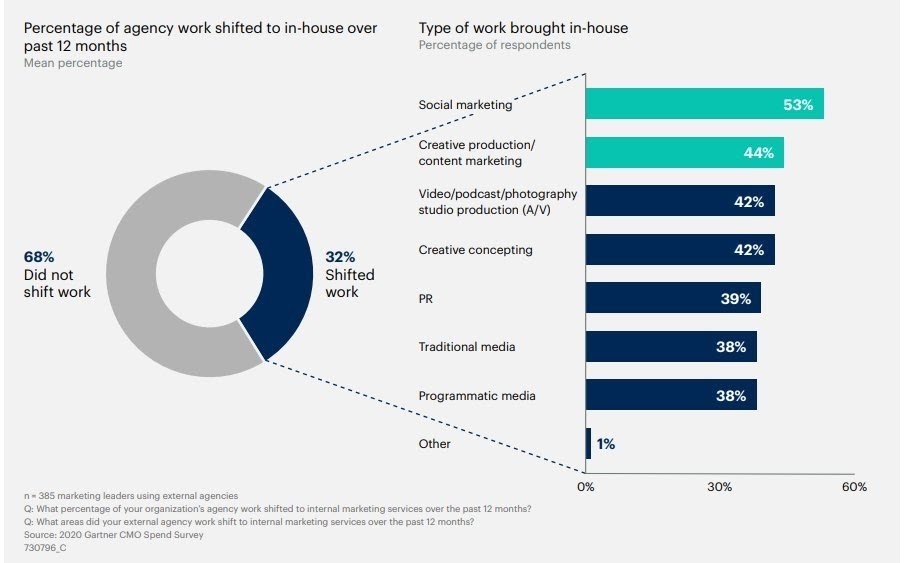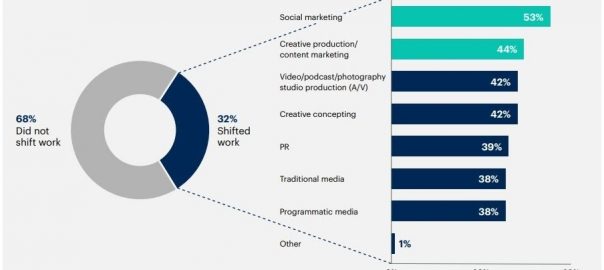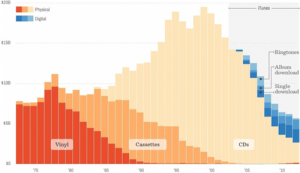Plus, ABM isn’t a cure-all
Marketing Land’s daily brief features daily insights, news, tips, and essential bits of wisdom for today’s digital marketer. If you would like to read this before the rest of the internet does, sign up here to get it delivered to your inbox daily.
Good morning, Marketers, today I’m thinking about data-driven responses to COVID-19.
Vaccine supply and an economic rescue plan are ramping up after a pivotal week. But how does the possibility of the pandemic’s end impact the consumer? And how do changes throughout the pandemic impact internal decisions about your team structure, like in-housing? In either case, marketers don’t have to guess. If data was crucial to marketers in “normal” times, it’s even more important now. Further down, I’ve included some numbers to expand our understanding of changes for customers.
But marketing strategies begin with common goals within your organization. Consider Scott Vaughan’s breakdown of what considerations B2B marketing teams should make before they go all-in on ABM. The full digitization of the B2B buying and selling process has been accelerated by the changes over the last year. Broader policy and legislation indicate that change will remain a constant for the foreseeable future.
(By the way, MarTech starts tomorrow, and we’ll be talking more about the changing customer there. See you soon.)
Chris Wood,
Editor
ABM is critical, but not all-inclusive
The B2B buying and selling process is now digital which means B2B Marketers find themselves playing an even more crucial and expansive role in the buying and selling process. This has created the question of the year for B2B marketing and sales teams: “Is shifting to an ABM strategy the right play for this buyer-driven, digital-first world?” Many B2B teams are finding that going all-in on ABM, in fact, is limiting their pipeline, leaving revenue on the table, and ignoring prospective customers simply because they’re not on a target account list. Note the emphasis on going all-in at the expense of other demand efforts.
In a new article, Scott Vaughan, Chief Growth Officer at Integrate, explains that it’s important to focus on the buyer’s buying process, not the seller’s selling process. “In many use cases, ABM should be a powerful component of your overall demand marketing effort,” writes Vaughan. “However, rarely should ABM be exclusive. Marketing must be able to support all three demand marketing targeting strategies – accounts, buyers, and customers – based on the state of your business, how your markets operate and your product line’s target buyer.”
ABM may not be appropriate to every market segment, and there are other ways of driving demand, pipeline and revenue. But ABM and demand generation need to be aligned in one, unified marketing and sales strategy.
Change in customer sentiment by industry
Research technology platform Lucid recently took a look at their global audience database to compare consumer sentiments now with how they felt a year ago, or how they might change behavior in the future. Here’s a look at important responses broken down by industry. For the study, Lucid surveyed a census-represented demographic audience of 300 U.S. consumers.
- Health: 66% say their mental health has suffered during COVID-19.
- Entertainment: 55% added an additional streaming service during COVID-19.
- Transportation: 59% say COVID-19 will have a lasting impact on how they use mass public transportation.
- Travel: 72% have plans to travel once vaccinated.
- Dining: 70% say COVID-19 will have a lasting impact on how they choose to dine out.
- Retail: 34% are very comfortable to shop indoors prior to vaccination.
- Romance: 87% think it’s possible to keep a new romantic connection alive during the pandemic.
- Work: 47% would prefer to work remotely post pandemic.
Why we care. For almost everybody during the global pandemic, the highs have been high and the lows have been low. The vaccine rollout is very good news, but it doesn’t mean a return to the conventional wisdom of pre-pandemic times. It will be an ongoing effort for marketers to analyze the data and adjust in real-time, as customers define their new normal. For instance, confidence in health safety at retail stores is a positive data point for that industry, while mass transportation and dining have a more difficult road ahead.
COVID shifts social and content agency work in-house

More brands are shifting their marketing in-house this year after COVID changed the landscape of digital marketing, according to data from Gartner’s CMO Spend Survey. In a tweet last week, Jennifer Hoffman shared the chart above which shows that over half of the CMOs surveyed ditched their agencies in 2020. Other areas that were transitioned from agencies to brand marketing teams included content marketing, video and podcast production, and PR.
Why we care. Most any agency will tell you that a year ago, they saw huge shifts in their client bases. People paused their marketing, lowered their spend, and waited to see what happened as the pandemic was just beginning to play out in the US. Those numbers shifted as consumers embarked on a mostly-digital lifestyle over the past year. However, the move to bring marketing resources in-house (whether placing responsibilities on existing employees or hiring focused talent in these areas) could help brands save money, have more direct control over their search marketing, and mitigate the added stress of client-agency relationships during an already stressful time for businesses.
Quote of the day
“Fostering curiosity is all about giving people the time and space they need to be curious, and encouraging it as part of your workflow. Done well, it satisfies professional development and training needs, opens up new business opportunities, and builds the foundation you need to be truly data-driven.” Christopher Penn, co-founder and Chief Data Scientist for Trust Insights.
Marketing Land – Internet Marketing News, Strategies & Tips
(52)








